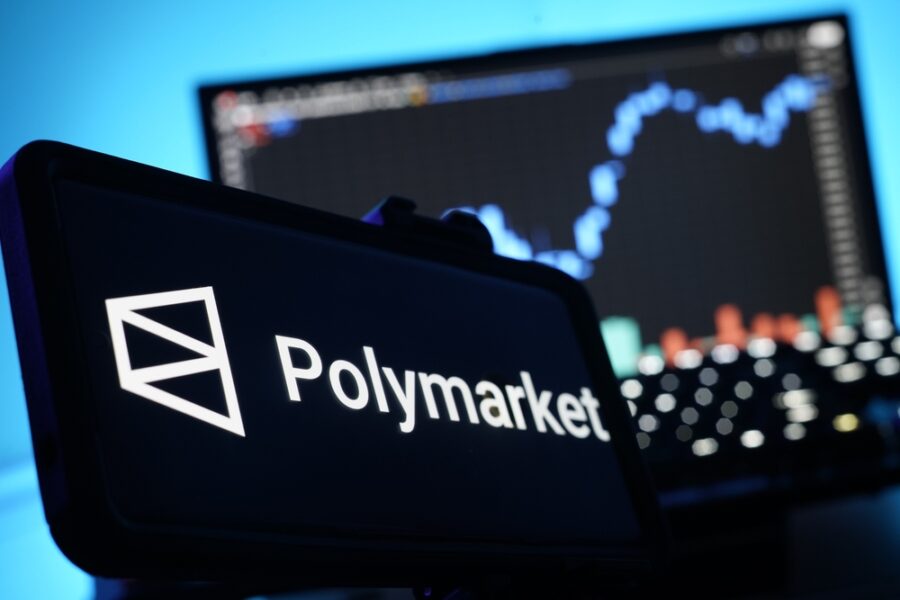Polymarket plots US return with sports betting focus

Prediction market Polymarket plans to relaunch in the US with a focus on sports betting.
Trading could begin by the end of November but will only be available to a limited number of users at first, according to reporting in Bloomberg.
The prediction market’s return follows its move offshore after paying a US$1.4 million penalty in 2022 to settle Commodity Futures Trading Commission allegations of illegal trading.
Polymarket later acquired Commodity Futures Trading Commission-licensed derivatives exchange QCX, after US regulators dropped investigations into the platform earlier this year.
The relaunch comes as prediction markets gain traction following Kalshi’s court victory that allowed trading on presidential election outcomes. Polymarket’s move could also coincide with the peak of the US football and basketball seasons.
Bloomberg reported that shares of US gambling firms fell after the news, with FanDuel owner Flutter Entertainment down 4.7% and DraftKings dropping as much as 9.2%.
The stocks had already slipped earlier after Donald Trump’s media company announced plans to enter the space through a partnership with Crypto.com.
Polymarket, valued between US$12 billion and US$15 billion in its latest fundraising talks, has opened a waitlist for US users. The company said on its website, “We’re working hard to get the US platform ready for launch – in the meantime, provide your phone number below to receive updates.”
Charlotte Capewell brings her passion for storytelling and expertise in writing, researching, and the gambling industry to every article she writes. Her specialties include the US gambling industry, regulator legislation, igaming, and more.
Verticals:
Sectors:
Topics:
Dig Deeper
The Backstory
How prediction markets pushed back into the U.S. mainstream
Polymarket’s planned return to the United States caps a year in which federally regulated event contracts moved from the margins of crypto to the center of a broader fight over who gets to offer sports-like products to Americans. The stakes are significant: prediction platforms are courting sports leagues, forming distribution alliances and racing to convert retail traders who behave a lot like bettors. At the same time, casinos and sportsbooks warn that these firms are skirting state regimes designed for gambling, even as federal regulators police them as financial markets.
The competitive map shifted this year as incumbent exchange operator CME Group signaled it would list sports-linked contracts and distribute them through futures commission merchants tied to major sportsbooks. That strategy, if executed, could fuse Wall Street plumbing with mainstream fan engagement, compressing the distance between a retail trader and a casual bettor. Meanwhile, Kalshi and Polymarket used regulatory wins and partnerships to grow sports volumes and visibility, intensifying pressure on traditional sportsbooks that face state-by-state compliance burdens.
Against that backdrop, Polymarket’s U.S. reboot is less a comeback than a bid to redefine the boundary between wagering and federally overseen derivatives. The platform is leaning into sports at the height of the football and basketball seasons while competitors test similar products. The question is whether the market is ready for event contracts to trade alongside financial futures — and whether states will tolerate it.
Federal green lights, state red flags
Polymarket’s route back to U.S. users runs through federal supervision. After settling with the Commodity Futures Trading Commission in 2022, the company acquired QCX, a CFTC-licensed exchange and clearinghouse, to provide a compliant venue for event contracts. Filings show the company sought certifications covering athletic events, spreads, total scores and election outcomes, signaling a broad slate beyond politics. The agency later issued a no-action letter, removing a key hurdle to relaunch. That sequence is laid out in coverage of Polymarket’s regulatory pivot and timeline in Polymarket set to relaunch in US as early as Friday.
Kalshi cleared its own path last year with a court victory allowing election markets, and it has since leaned hard into sports. But the state-federal clash is far from settled. Some states maintain that event contracts on sports are wagering and therefore restricted to licensed sportsbooks. The tension flared after the NHL signed marketing agreements with Kalshi and Polymarket, prompting the American Gaming Association to call the deals “deeply concerning” and Nevada regulators to remind licensees that sports event contracts are treated like wagers within the state. That pushback is detailed in NHL signs multi-year deals with Kalshi and Polymarket.
The jurisdictional split matters. Federal oversight allows exchanges to self-certify contracts and go to market quickly, while state gambling approvals typically require slower, fragmented processes. The friction is turning into a competitive moat for CFTC-registered platforms — unless states find ways to block distribution within their borders or persuade leagues to step back.
New entrants and the sportsbook squeeze
The competitive dynamics shifted when CME Group prepared a slate of event contracts, including sports, to rival Kalshi and Polymarket. The exchange can self-certify products and plans to route them through intermediaries tied to consumer brands, including a channel in development with FanDuel. Markets reacted swiftly — DraftKings fell on the report — reflecting a belief that event contracts could pull activity from sportsbooks or pressure margins. Bloomberg’s reporting on CME’s plan and FanDuel’s role is summarized in CME Group prepares sports-linked contracts to rival Kalshi and Polymarket.
Even so, the early numbers suggest the sportsbook threat is uneven. Kalshi’s NFL “parlay” feature jolted gambling stocks at launch, but volumes remained a small share of the platform’s overall trading. In one week, single-game and multi-game parlays combined for about 3% of NFL contract trading and just over 1% of total activity. The outsized market reaction underscored less the immediate revenue shift and more the perceived trajectory as prediction markets iterate quickly and target fan behaviors that sportsbooks have monetized for years. Those figures and context appear in Market overreacted to Kalshi’s NFL parlay launch.
For sportsbooks, the risk is not a like-for-like replacement but cumulative erosion if event contracts gain cultural legitimacy, institutional distribution and league-backed branding. For exchanges, the opportunity is to convert volatile, high-margin fan interest into repeat trading — with broader federal preemption shielding them from the patchwork of state betting bans.
Partnerships as distribution engines
As regulatory footing solidified, prediction platforms sought leverage through partnerships. Polymarket struck a deal with X to integrate market probabilities and real-time social data, positioning its prices as a context layer for how fans and traders interpret breaking developments. The collaboration, which envisions deeper technology tie-ins and on-platform insights, reflects a playbook long used in finance: bind market data to the media feeds that shape sentiment. Details on the tie-up and positioning are in Polymarket ties up with X as official prediction market partner.
Leagues are becoming another key distribution vector. The NHL agreements gave Kalshi and Polymarket access to league data and branding — and broadcast exposure across tentpole events. While the American Gaming Association objected, the deals spotlight how leagues are testing new fan engagement products that resemble financial instruments as much as wagers. That duality — entertainment wrapper, market structure core — is at the heart of the industry’s regulatory friction and growth thesis, as covered in the NHL partnerships story.
If CME follows through with FanDuel-distributed contracts, distribution could tilt even further toward mainstream channels, erasing the distinction between a sportsbook app and a brokerage-like interface. The first mover who marries compliant rails with viral reach may set the category’s norms.
Momentum, valuations and what comes next
Investor interest has kept pace with product launches. Kalshi raised $300 million at a $5 billion valuation as sports volumes surged. Reports indicate Polymarket’s fundraising talks carried a higher implied valuation on the back of rapid growth and a broader U.S. plan. While the parlay math suggests displacement fears are early, liquidity trends point toward sustained demand for sports-linked event contracts as a complement to both betting and traditional trading. The scale and composition of Kalshi’s flow, including its NFL and college football volumes, are unpacked in analysis of the parlay launch and volumes.
Polymarket’s U.S. reentry crystallizes the new competitive set: CFTC-registered platforms emphasizing speed to market and integrated data partnerships, a legacy exchange preparing to industrialize the category, and sportsbooks weighing whether to fight, partner or seek parity through regulation. State regulators will test the limits of federal oversight, leagues will weigh brand risk against engagement upside and investors will continue to price the possibility that event contracts become a permanent fixture of U.S. sports culture.
The immediate markers to watch: final product certifications across sports categories, how quickly CME lists sports-linked contracts, whether more leagues follow the NHL, and if any state takes enforcement steps that curb distribution. Each will shape whether prediction markets remain a parallel track to sports betting or converge into a single, federally supervised marketplace with mass reach.








